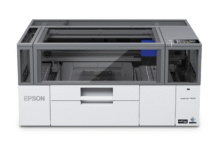
The South Korean Hankyung Media Group, which prints The Korea Economic Daily, is investing in a comprehensive newspaper printing project with manroland Goss. The long-established media company opted for high-quality, fastest speed and state-of-the-art automation. The two highly automated Colorman e:line presses to be installed in its newly built 3,700 square meter printing plant in Bupyeong National Industrial Complex in Incheon is projected to supply South Korea with high-quality print products.
After signing the contract in September 2022, Hankung Media’s executive director Hyun Seung-Yoon is convinced that, “With the acquisition of the Colorman e:line, we will have the most powerful and automated production line for daily newspapers in Korea. A major focus of this project is also that the 60th anniversary edition in 2024 will have the best print quality of all newspapers printed in Korea. With these features, the production line naturally also offers many attractive advantages for contract printing orders from the Korean newspaper market.”
Heiko Ritscher, vice president International Sales and Service at manroland Goss adds, “Two partners with similar goals are working together on this project – the management and project team of Hankyung with a business model that, in addition to high-quality printing of its own daily newspaper, also focuses on becoming the largest newspaper contract printing company in Korea in the next few years, along with manroland Goss, an established supplier and service provider for web offset printing presses on the global market, which is clearly focused on further consolidating and expanding this leading position. This as a clear commitment to the future of the printed daily newspaper as a news channel.”
The two printing presses each consist of six printing units, six reel splicers, two folders and a comprehensive automation package. The production of each line is designed for an output of 95,000 copies per hour giving the plant a total production capacity of 190,000 copies per hour which corresponds to a production output of up to one million copies of The Korea Economic Daily each night. The aim is to achieve cost-effectiveness with reduced unit costs for the production of large circulations, as well as smaller subcontracted circulations – thanks to the high level of automation.
Before signing the contract, a delegation of experts from South Korea had the opportunity to inspect similar printing presses. “The fact that we were able to demonstrate the automation functions and the performance potential when visiting new Colorman e:line presses with the project group here in Germany certainly contributed to the success in this major project. The success story of the Colorman e:line continues in the Asian market,” says Alwin Stadler, deputy vice president Sales at manroland Goss.














